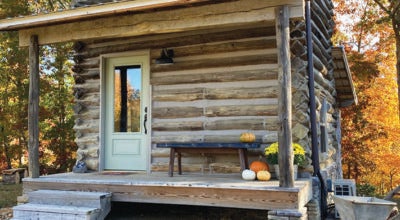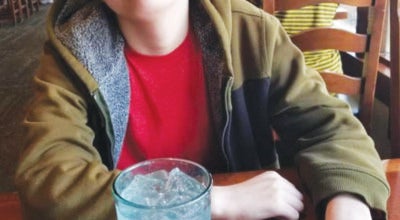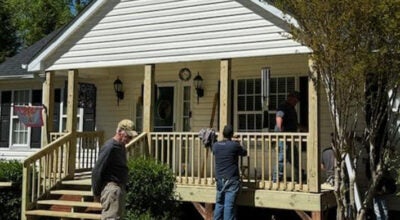Presidential Sites: McKinley not associated with many locations
Published 9:34 am Thursday, June 9, 2022
|
Getting your Trinity Audio player ready...
|
By Betty Etchison West
For the Enterprise
Unfortunately, William McKinley suffered the same fate as did President Abraham Lincoln and President James Garfield. President McKinley was visiting the Pan-American Exposition in Buffalo, N.Y., when an anarchist approached him as he was shaking hands with a line of supporters.
When Mr. McKinley attempted to shake the assassin’s hand, which was covered by a handkerchief, he was shot.
The President was severely injured, but his greatest concern was for his wife who was almost an invalid. He whispered to his secretary who was traveling with him, “My wife … be careful … how you tell her … oh be careful!”
At that time President McKinley had only served six months of his second term.
Mrs. McKinley’s reaction is described in the book, “First Ladies” by Betty Etchison West: “First Lady Ida McKinley reacted bravely when he received the news. She showed strength beyond belief as she sat by her husband’s bedside for the eight days hoping for his recovery. Resident William McKinley died from an infection on Sept. 13, 1901.”
There are a number of sites connected to some Presidents of the United States. Not so with William McKinley.
There are only two and both are in Canton, Ohio.
McKinley was born in Niles, Ohio. His birthplace, which was used in a number of ways after the McKinley family moved, was destroyed by fire. Many years of his life McKinley lived in hotels – none of which seem to be designated as a McKinley site. Only Canton, Ohio, has sites connected to President McKinley.
McKinley, who grew up in Ohio, went to school there. He finally entered Allegheny College but dropped out. He taught school for a while before becoming a postmaster.
At the beginning of the Civil War, McKinley did what thousands of young men did. He joined the Union Army. He moved through the ranks. He was a private when he entered the army, and, by the end of the war, McKinley was a brevet Major. He was asked to stay in the army, but did not.
He had decided that he wanted to be a lawyer. He spent a year working in a lawyer’s office before entering Albany Law School in New York State. The next year, 1867, he passed the bar examination and was admitted to the Ohio Bar.
William McKinley, Ohio born and bred, chose an Ohio town, Canton, as the site of his first law office. He may have chosen that town because his sister taught school there.
After moving to Canton, William McKinley met a vivacious young lady at a picnic and learned that she was working at her father’s bank. The young lawyer found many reasons to visit the bank, not because he had a lot of money, but, because he was fascinated with the young teller. That fascination seemed to work two ways and soon the couple realized they were deeply in love. They were married in 1871 and were very happy.
Their first child, Katie, who they loved so deeply, died when she was 3. They had another daughter, Ida, who died when she was 5 months old. Ida’s mother also died. Ida was so overcome with grief that she was never well after that. In fact, she was almost an invalid. That is the reason that President McKinley was so concerned about telling his wife that he had been shot.
The following explains the McKinley connection to Saxton house. After he became a lawyer, Mr. McKinley got interested in politics. He was a good speaker and immediately gained attention.
He was elected to Congress. When he was not living in Washington, he and his wife would live with her family at their home, Saxton House. Also, at one time McKinley had his law office in Saxton House, thus that structure is closely connected to the 25th President of the United States.
The book, “Cabins, Cottages, and Mansions “by the Benbows, says this about the Saxton House. “Today, the Saxton House in owned by the National Park Service, which leases the building to the Stark County Foundation, a local civic and cultural organization which uses a portion of the building for office space. As befits the ancestral home of a first lady, a first ladies’ library is being planned for the building.
The age of the house is unknown, however, speculation is that the house could have been built around or before the marriage of Ina McKinley’s parents in 1846. It is a three-story structure, whose six chimneys were rebuilt. It features a large warp-around porch, a black walnut spiral staircase leading from the reception hall to the second floor ballroom, and the original mahogany doors, baseboards, and moldings. It has 12 open fireplaces and its basement features attractive stone and brick work, heavy timber lintels and archways.
Today, the beautiful building stands as the only surviving private residence linked to the slain president whose administration ushered America into the 20th century and a new era of American involvement in world affairs as a global power.”
The other site connected to President McKinley is the huge McKinley Memorial which actually near the Saxton House. It is the place where William McKinley, his wife, Ida, and their two little girls, Katie and Ida, are interred. The information at the site says that memorial was paid for by donations. Much of the money was donated by the children of America who donated their pennies. It is a fitting tribute to a man who did much for his country and who was killed in such a cruel way.
The feeling of the people in this country was probably influenced by the loving way that Mr. McKinley treated his invalid wife. The people had noted his devotion to Ida through the years. While he was governor, every day at 3 p.m. Mr. McKinley would go outside and wave his handkerchief at the window where his wife would be sitting in the hotel suite where they lived. It did not matter what the governor was doing, when the three o’clock hour arrived, he carried out that ritual.
This attention was also displayed after William McKinley was elected President. Even though she was not well, the First Lady wanted to attend White House functions such as dinners. The president always had his wife seated beside him at White House functions. If Ida began to have a seizure, Mr. McKinley would simply cover her face with a large napkin. When the seizure passed, he would uncover the face of his wife as if nothing had happened. This behavior on the part of the president was noticed by the American people as were the policies which he initiated.
The huge McKinley Memorial which was built with donated money indicates that the American people, including children, really honored their fallen leader.
If you plan to visit the Sexton House in Canton, Ohio, you should call 330-452-0876 or 330-4455-7043 for information because the hours of operation are different during winter and summer.






